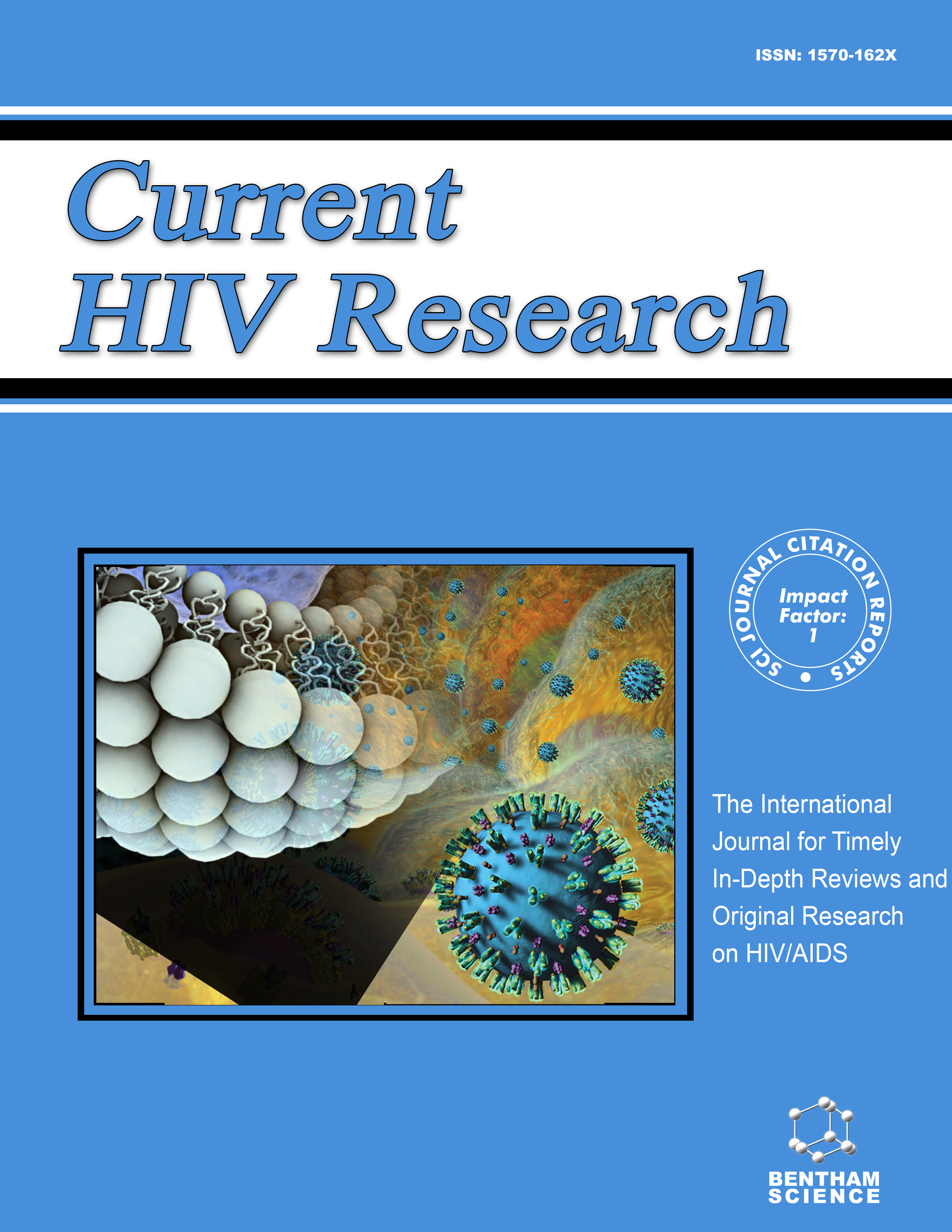- Home
- A-Z Publications
- Current HIV Research
- Previous Issues
- Volume 3, Issue 2, 2005
Current HIV Research - Volume 3, Issue 2, 2005
Volume 3, Issue 2, 2005
-
-
HIV Vaccine Rationale, Design and Testing
More LessA central obstacle to the design of a global HIV vaccine is viral diversity. Antigenic differences in envelope proteins result in distinct HIV serotypes, operationally defined such that antibodies raised against envelope molecules from one serotype will not bind envelope molecules from a different serotype. The existence of serotypes has presented a similar challenge to vaccine development against other pathogens. In such cases, Read More
-
-
-
Viral Correlates of HIV-1 Disease
More LessAuthors: Cleo G. Anastassopoulou and Leondios G. KostrikisThe transmission of HIV and the progression of HIV disease are influenced not only by a large number of human host factors, but also by certain correlates of the ever fluctuating virus quasispecies. The present review article aims at providing the current state of knowledge as well as an in-depth critical discussion of recent developments on the potential effects of HIV subtype, phenotype and attenuation on HIV disease. Des Read More
-
-
-
Inpatient Care of the HIV Infected Patient in the Highly Active Antiretroviral Therapy (HAART) Era
More LessThe inpatient presentation of the HIV infected patient has changed over the years. From the early years when patients presented with accumulating opportunistic infections that led to an early demise to the HAART era with reports of dramatic decreases in opportunistic infections and improvements in life expectancy, the evolution of inpatient HIV care has been a challenge to the clinician. In the HAART era the pre Read More
-
-
-
Structural Bases of the Annealing of Primer Lys tRNA to the HIV-1 Viral RNA
More LessBy Carine TisneTo promote the initiation of reverse transcription, the HIV-1 virus uses a host tRNA as a primer, L ys tRNA3 . The annealing of L ys tRNA3 to the viral RNA requires the breaking of the 3D structure of the tRNA and RNA rearrangements, to form a stable initiation complex recognised by the reverse transcriptase. The annealing is mediated by a viral factor, the nucleocapsid protein. This protein has been studied for a long while to defi Read More
-
-
-
Non-Replicating Viral Vector-Based AIDS Vaccines: Interplay Between Viral Vectors and the Immune System
More LessAuthors: Sybille L. Sauter, Amena Rahman and Girija MuralidharDuring the past 20 years, the development of HIV vaccines has come a long way. The focus has progressively changed from the traditional protein-based HIV vaccines that induce humoral immunity to the live recombinant viral vector-based HIV vaccines capable of eliciting both cellular and humoral immune responses. These new viral vector-based vaccines encoding multiple HIV antigens, delivered either alone or in heterolo Read More
-
-
-
Evaluation of a Low Cost Reverse Transcriptase Assay for Plasma HIV-1 Viral Load Monitoring
More LessWe evaluated a low cost manual reverse transcriptase assay (ExaVir(ρ) Load V.1 and V.2; Cavidi Tech AB) against commercially available HIV RNA assays that quantify viral load to assess its suitability for use in resource-constrained settings. Frozen plasma samples previously tested for RNA by RT-PCR (Roche Diagnostics) and bDNA (Bayer Diagnostics) were retested for RT activity. Text sequence obtained from HIV genotype anal Read More
-
-
-
C3d Enhances Immune Responses Using Low Doses of DNA Expressing the HIV-1 Envelope from Codon-Optimized Gene Sequences
More LessAuthors: Joseph F. Bower, Kelly L. Sanders and Ted M. RossDNA vaccinations effectively induce both humoral and cellular immune responses to immunogens from diverse infectious agents. However, DNA vaccines expressing the HIV-1 envelope glycoprotein (Env) are poorly immunogenic when expressed from wild-type (wt) DNA sequences. Two recent approaches used to enhance the immunogenicity of Env expressed from a DNA vaccine are the fusion of the molecular adjuvant, Read More
-
Volumes & issues
-
Volume 23 (2025)
-
Volume 22 (2024)
-
Volume 21 (2023)
-
Volume 20 (2022)
-
Volume 19 (2021)
-
Volume 18 (2020)
-
Volume 17 (2019)
-
Volume 16 (2018)
-
Volume 15 (2017)
-
Volume 14 (2016)
-
Volume 13 (2015)
-
Volume 12 (2014)
-
Volume 11 (2013)
-
Volume 10 (2012)
-
Volume 9 (2011)
-
Volume 8 (2010)
-
Volume 7 (2009)
-
Volume 6 (2008)
-
Volume 5 (2007)
-
Volume 4 (2006)
-
Volume 3 (2005)
-
Volume 2 (2004)
-
Volume 1 (2003)
Most Read This Month
Article
content/journals/chr
Journal
10
5
false
en


